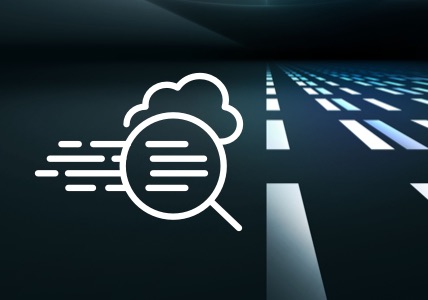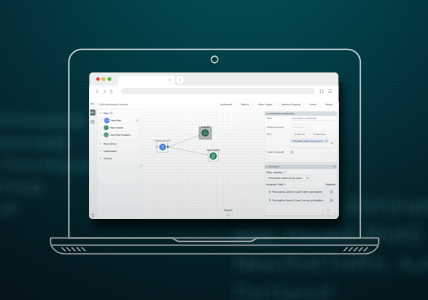Harness the Power of Deep Observability for Public Sector
Note: See the first post in this series here.
In ancient myth, Argus Panoptes was the perfect watchman. A giant with a hundred eyes, Argus was entrusted to stand guard over Io: ever-watchful, ever-vigilant. Even when some of his eyes rested, others remained open, scanning for threats. Nothing escaped his gaze.
But success breeds complacency. When the god Hermes came to slay Argus, he didn’t charge in with a sword. He played his lyre and whispered stories, lulling Argus into slumber. One by one, those hundred eyes closed. And when the last eye shut, Hermes struck. The mighty guardian fell, not because he lacked power, but because he couldn’t see the attack coming.
Public sector cybersecurity faces a similar risk. Legacy tools were built to watch over our networks, trusting logs and security alerts to keep us safe. But these tools were built for a different time, in a different landscape. Bit by bit, they have become ill-equipped to handle the complexities of modern hybrid environments, leaving behind dangerous blind spots that adversaries are all too eager to exploit. Gone are the days of logs alone being a trusted, infallible source of adversary detection. Logs alone have lulled security teams into a state of sleepwalking waiting for a “positive” event to arise. The only way to awaken Argus and maintain complete threat visibility is through deep observability: logs + packets + metadata telemetry visibility up to Layer 7.
Why Traditional Monitoring Is Asleep at the Wheel
For years, MELT (metrics, events, logs, traces) has been our default strategy for understanding network health and security. On the surface, it promises visibility into records of execution, like a digital diary, to empower tools with a historical view of what actions occurred. But the truth is far less reassuring. MELT only shows what the system chooses to log. It lacks application awareness, meaning it can’t tell when devices are behaving abnormally. Worse, the devices generating these logs are often participants in the very traffic they are meant to monitor. When things go sideways — outages, attacks, network convergence — logging is “best effort.” Critical details slip through the cracks: retransmits, high latency, failed TCP handshakes. It is the digital equivalent of Hermes strumming his lyre. One by one, the eyes close. The network grows quiet, and in that silence, the attack begins.
Deep Observability: Opening Every Eye
Deep observability is more than an upgrade, it is a wake-up call. It peels back the layers of abstraction and shows you everything happening in your environment, from the network to application layer and all things in between. No more trusting incomplete, corrupt, or ill-configured logs. No more flying blind.
How deep observability works:
- Lateral visibility: Traditional tools only see what passes through predefined checkpoints. Deep observability extends beyond those boundaries, following traffic wherever it flows, even laterally across hybrid cloud environments.
- Deep packet inspection (DPI): This is not about waiting for alerts. DPI gives you eyes on every packet, in real time, revealing applications, protocols, and encrypted communications moving through your environment. It shows what no log ever could.
- Metadata telemetry: A security team’s secret weapon, this data-about-data enables proactive threat hunting when used in conjunction with packets and logs, turning once manual/tedious actions into automated, proactive investigations by analyzing patterns and actions in real-time. Activity that would go unnoticed until action-on-objective by adversaries.
Seeing the Unseen
What does this kind of awareness reveal? More than you might expect:
- Pinpoint whether performance issues stem from the network or the application, slashing mean time to innocence
- Identify encryption protocols across the environment, preventing outdated standards from becoming hidden vulnerabilities
- Detect both known and unknown applications and workloads in motion
- Spot lateral movement and nonstandard port usage
- Monitor DNS performance in real time, tracking requests, responses, and hidden errors like NXDOMAIN
- Expose IoT devices and outdated TLS certificates, which often fly under the radar
This is not just better visibility; it is total vigilance.
Awaken the Watchman
Argus didn’t fall because he lacked power. He fell because he let his guard down, lulled into a false sense of security by trusting that yesterday’s defense tactics would continue to work against tomorrow’s threats. Public sector agencies now stand at the same precipice. The tools we’ve relied on for decades are obsolete. Logs and security alerts only offer the illusion of safety; they identify once malicious actions have already occurred, and while we sit comfortably behind our traditional defenses, threat actors slip past unnoticed, living off the land and using trusted streams, all because they do not trigger a security alert.
It’s time to awaken the watchman. To open every eye. Deep observability isn’t just a strategy — it is the difference between vigilance and blindness. The question is, when the next attack comes, will your eyes be open? Or will you sleep while the enemy slips through the gates?
Written by Gigamon employees, assisted by AI.

CONTINUE THE DISCUSSION
People are talking about this in the Gigamon Community’s Security group.
Share your thoughts today








